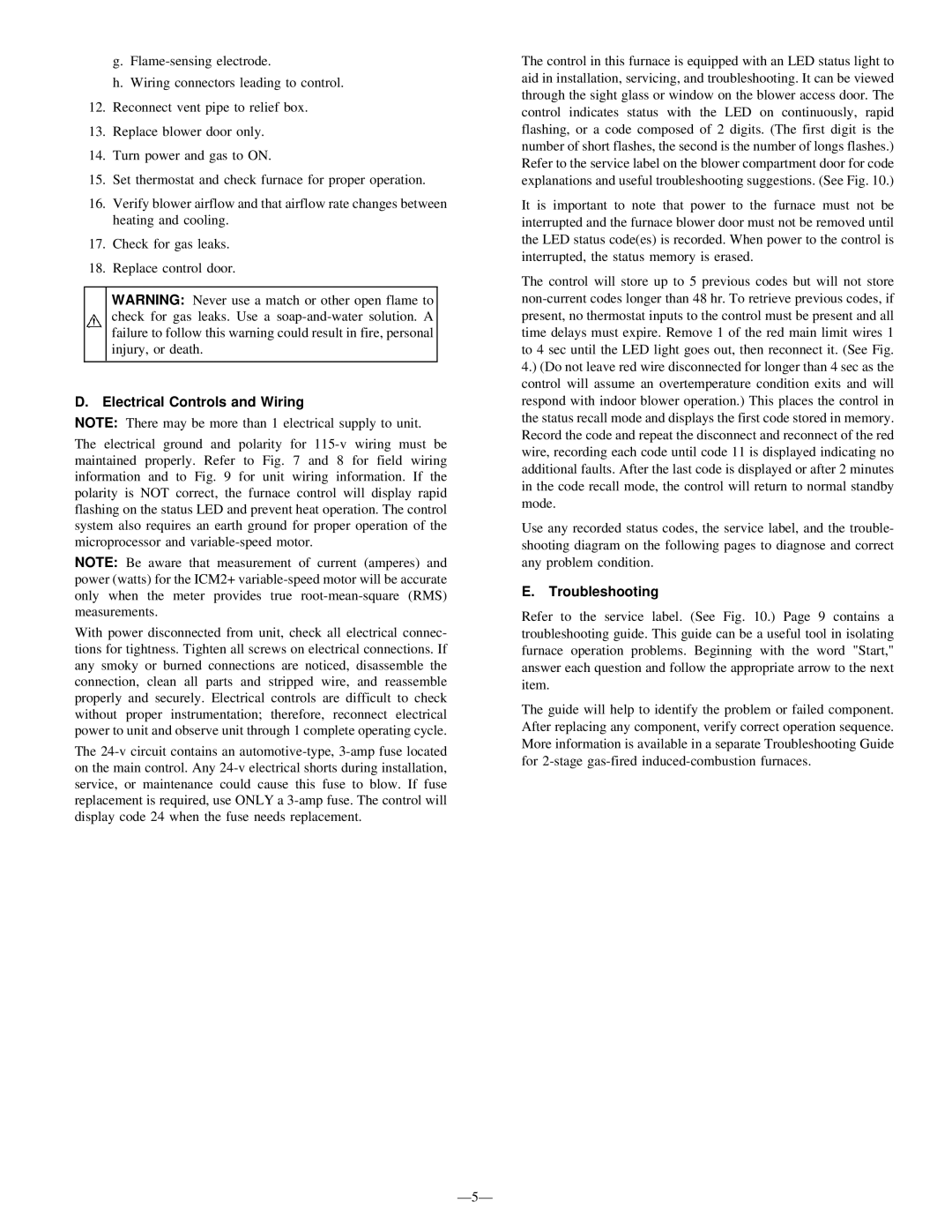
g.
h.Wiring connectors leading to control.
12.Reconnect vent pipe to relief box.
13.Replace blower door only.
14.Turn power and gas to ON.
15.Set thermostat and check furnace for proper operation.
16.Verify blower airflow and that airflow rate changes between heating and cooling.
17.Check for gas leaks.
18.Replace control door.
WARNING: Never use a match or other open flame to
check for gas leaks. Use a
D.Electrical Controls and Wiring
NOTE: There may be more than 1 electrical supply to unit.
The electrical ground and polarity for
NOTE: Be aware that measurement of current (amperes) and power (watts) for the ICM2+
With power disconnected from unit, check all electrical connec- tions for tightness. Tighten all screws on electrical connections. If any smoky or burned connections are noticed, disassemble the connection, clean all parts and stripped wire, and reassemble properly and securely. Electrical controls are difficult to check without proper instrumentation; therefore, reconnect electrical power to unit and observe unit through 1 complete operating cycle.
The
The control in this furnace is equipped with an LED status light to aid in installation, servicing, and troubleshooting. It can be viewed through the sight glass or window on the blower access door. The control indicates status with the LED on continuously, rapid flashing, or a code composed of 2 digits. (The first digit is the number of short flashes, the second is the number of longs flashes.) Refer to the service label on the blower compartment door for code explanations and useful troubleshooting suggestions. (See Fig. 10.)
It is important to note that power to the furnace must not be interrupted and the furnace blower door must not be removed until the LED status code(es) is recorded. When power to the control is interrupted, the status memory is erased.
The control will store up to 5 previous codes but will not store
Use any recorded status codes, the service label, and the trouble- shooting diagram on the following pages to diagnose and correct any problem condition.
E.Troubleshooting
Refer to the service label. (See Fig. 10.) Page 9 contains a troubleshooting guide. This guide can be a useful tool in isolating furnace operation problems. Beginning with the word "Start," answer each question and follow the appropriate arrow to the next item.
The guide will help to identify the problem or failed component. After replacing any component, verify correct operation sequence. More information is available in a separate Troubleshooting Guide for
